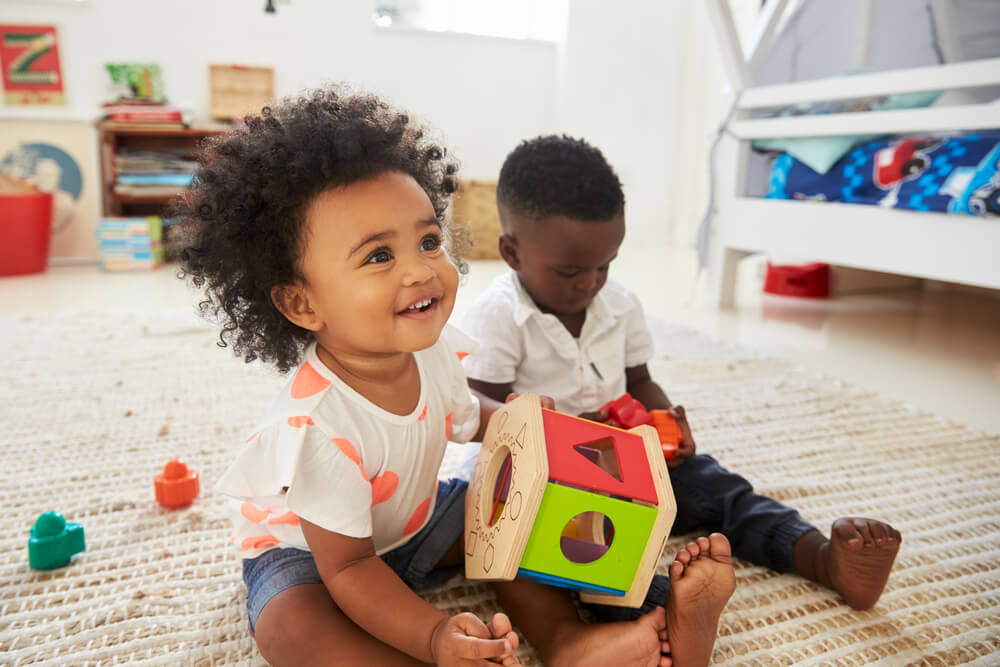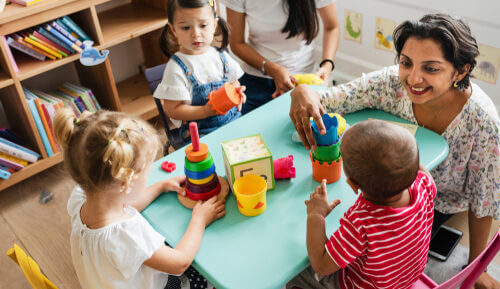
Table of contents
- How do nurseries assess children?
- Why do two-year-olds need a progress check?
- Who carries out a progress check?
- What helps inform a progress check at 2?
- What does a progress check at two include?
- When should a progress check be done?
- What should happen before a progress check is carried out?
- What questions are parents asked in a progress check?
- What else must the nursery do for a progress check?
- What happens after a progress check at age 2?
- What happens if a progress check reveals a development delay?
Table of contents
- How do nurseries assess children?
- Why do two-year-olds need a progress check?
- Who carries out a progress check?
- What helps inform a progress check at 2?
- What does a progress check at two include?
- When should a progress check be done?
- What should happen before a progress check is carried out?
- What questions are parents asked in a progress check?
- What else must the nursery do for a progress check?
- What happens after a progress check at age 2?
- What happens if a progress check reveals a development delay?
What is a progress check for two-year-olds? In a child’s early years, registered childminders, nurseries and other early years settings must conduct a review of the development of each young child in their care.
How do nurseries assess children?
Nurseries can assess the development of children by conducting a progress check for two-year-olds. This involves making an assessment of a child’s development in three key areas of learning:
- Communication and language
- Personal, social and emotional development
- Physical development
This is detailed in the EYFS framework, which is the standard that must be met by early years providers for the learning, development and care of children aged from birth to five-years-old.
The progress check helps early years practitioners make an assessment of a child’s development, health and wellbeing. It involves talking to parents and other professionals involved in the child’s life.
A progress check must identify the child’s strengths and any areas where the child’s progress is below what is expected. It must also identify any major emerging concerns, developmental delay. This may indicate Special Educational Needs and Disabilities (SEND).
As part of the progress check, early years practitioners should give parents a short, written summary of their child’s development.
Why do two-year-olds need a progress check?
- Children develop rapidly between the ages of two and three and early years practitioners need to identify what help, if any, a child needs to aid their development, health and wellbeing.
- Some children need extra support as they grow, e.g. with communication. Perhaps a child has long-term developmental needs. A progress check can identify areas of concern or any extra development needs the child may have.
- Some children’s families may be struggling and need support. Early intervention sparked by a progress check can make a big difference to a child’s life.
Who carries out a progress check?
The child’s designated key person at the early years setting. This person usually knows the child best and as a result should complete the progress check.
What helps inform a progress check at 2?
A progress check is informed by:
- The early years practitioner’s professional judgement and observations.
- The voice of the child. Very young children (including children with SEND) may tell us what they are thinking and feeling through words, gestures, actions and body language.
- The views of the child’s parents.
- The views of other professionals such as GPs or health visitors, if appropriate.
What does a progress check at two include?
A progress check at age two aims to:
- Review a child’s development.
- Highlight areas where the child is making good progress.
- Identify areas of concern or where progress is not as expected.
- Help parents to understand their child’s needs and boost a child’s development at home.
- Invite parents to share knowledge about their child, family and culture.
A child’s home learning environment plays a big part in the development of a child’s speech, language and communication. When it comes to the home environment, staff must understand the culture, diversity, choices and circumstances of a child’s family. In nurseries, staff may consider how a child plays with other children in the early years setting, whether they are starting to share and take turns and are getting more independent.
When should a progress check be done?
In deciding when to do a progress check, staff should consider:
- When did the child start at the early years setting.
- Has there been enough time for the key person to build a relationship with the child?
- Does the early years provider know enough about the child and their interests?
- A child’s individual needs and circumstances. Has the child experienced a period of ill health or another significant event? (For example, the birth of a new sibling, a bereavement, a family breakdown).
- Pattern of attendance: Has the child had a period of non-attendance or irregular attendance?
- Under such circumstances, an early years setting can review whether the timing is appropriate. They can consider delaying the progress check in order to get to know the child well enough before undertaking the check.
What should happen before a progress check is carried out?
Before conducting a progress check, early years practitioners should:
- Speak to the parents of each child and give them information about the progress check at age two in the early years setting.
- Invite parents to give their views on their child’s development.
- Consider how the child’s voice can be heard in the process.
- Seek support from the nursery manager or other professionals, where appropriate.
What questions are parents asked in a progress check?
Questions an early years practitioner might ask in a progress check, could include:
- Have you noticed your child is learning new words?
- Does your child put those words together into short sentences?
- Can they understand and follow simple instructions?
- What have you noticed about your child’s understanding of new words?
- Do people outside of the family generally understand what your child says, or do you have to explain?
- Do you have any concerns about your child’s walking/ talking/ hearing/ sight/ happiness?
- Does your child join in with play, sharing books or try to do things around the house like helping you to load the washing machine?
What else must the nursery do for a progress check?
It is important for practitioners, professionals and parents to share knowledge and experience and work together to support children’s wellbeing, learning and development.
The nursery must provide parents with a short, written summary of their child’s development in:
- Communication and language.
- Personal, social and emotional development.
- Physical development.
The summary should:
- Identify a child’s strengths and where they have made good progress.
- Highlight where progress is below what is expected and where extra support is needed.
- Highlight if there is a concern that a child may have a developmental delay.
- Staff should describe the activities and strategies they intend to take to address any issues or concerns.
- Staff should get the consent of parents to share information directly with other relevant professionals.
A nursery should:
- Discuss with parents how the summary can be used to support learning and development at home.
- Describe the activities and strategies they aim to implement at the early years setting to address any issues or concern.
What happens after a progress check at age 2?
After completing the progress check at age two, parents and early years practitioners must take actions in the best interests of the child.
- The child’s summary will set out how parents and the early years practitioner will work together to help your child’s continuing development.
- If your child is having any difficulties with their development or has Special Educational Needs and Disabilities (SEND), the child’s summary will set out the additional help your child will receive.
- Based on progress check findings, staff work with parents and other professionals. This can include speech and language therapists, physiotherapists and health visitors to give support to a child based on their identified needs.
- Any agreed actions should be put in place to meet the child’s needs in the early years setting or at home.
- The early years practitioner should provide a copy of the child’s summary to parents and add a copy to the child’s learning and development record.
What happens if a progress check reveals a development delay?
Early years practitioners should notice if a child displays difficult or withdrawn behaviour, which might indicate SEND.
Most children with special educational needs overcome these challenges eventually, but they will need extra support during the early years.
To learn more about SEND click here
If a progress check highlights a developmental delay:
- An early years practitioner can highlight a child as needing extra support.
- Individual early years practitioners will not attempt to identify SEND on their own.
- Only professionals with specialist training can do this. In England, Wales and Northern Ireland, all nurseries are required to appoint a qualified Special Educational Needs Coordinator (SENCO). Many nurseries in Scotland also have SENCOs. The SENCO is responsible for coordinating the care of all children with SEND in an early years setting.
- Progress checks should be completed and discussed sensitivitely. Early years practitioners should ensure parents don’t feel judged.
- Nurseries should give parents clear information about what the nursery plans to do next and what (and if appropriate) what staff would like parents to do.
- Parents should be told if consultation with specialists such as a paediatrician may be appropriate.
- If there are significant emerging concerns (or identified Special Educational Needs and Disabilities (SEND), early years practitioners should create a plan to support the child. The plan must be made with the involvement of other professionals (e.g. the early years provider’s SENCO) and parents.
To learn more about SENCOs and how nurseries support children with SEND click here.


